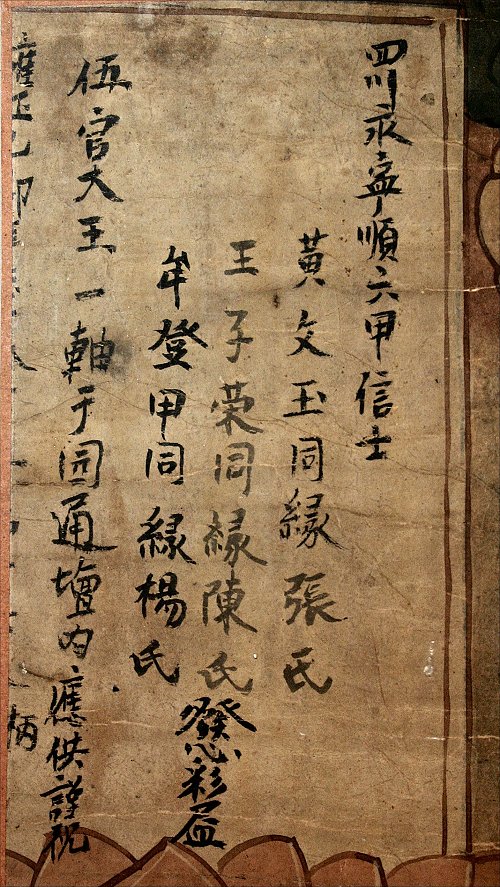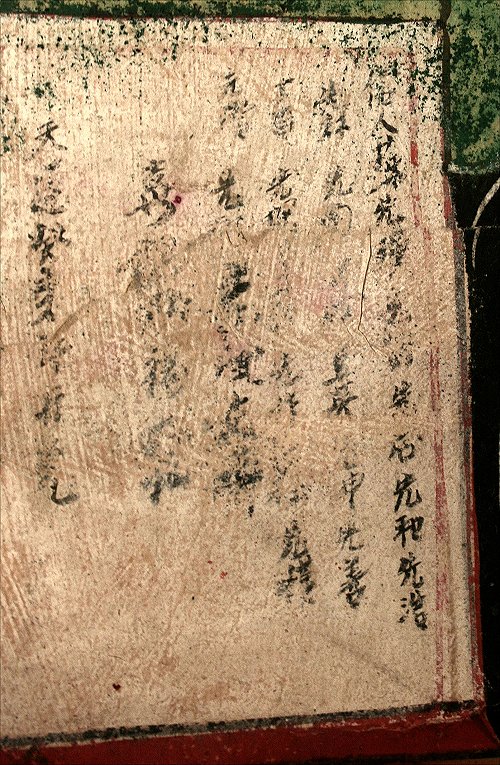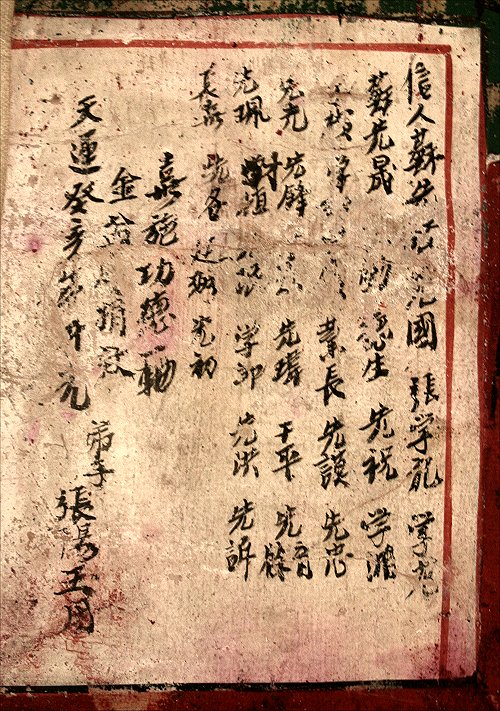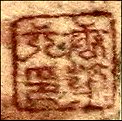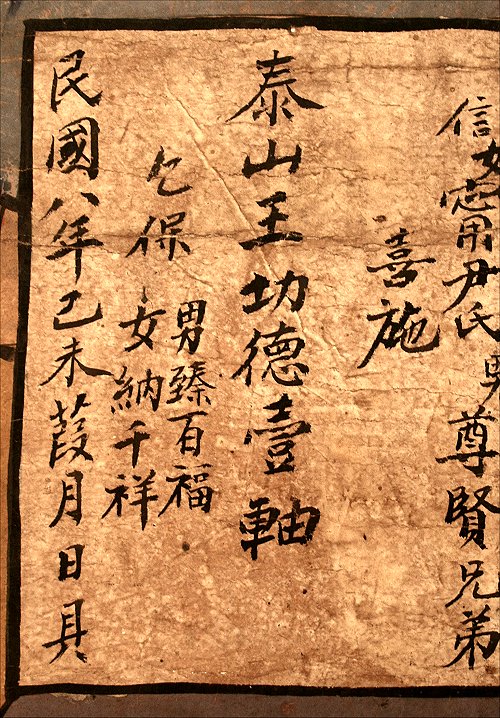
The I series of ten scrolls reserves a space to the side of each judge's desk to record the scroll's sponsor, but all such cartouches are empty except for that of the seventh scroll (I07) dedicated to Tai Shan's court. Partially obscured by the new mounting, it credits a woman and two brothers for sponsoring the scroll in 1919 in order to secure blessings for a son and daughter.
Because hell scrolls were largely produced by workshops, they fall within the realm of graphic artisans rather than independent artists. That is, they were produced in volume, probably with an assembly line mentality of certain people specializing in certain features, and they are not signed works. In a few cases, the sponsors are identified as in the Vidor scrolls that proclaim “Respectfully donated by the devout Buddhist woman Jin, nee Lin” (信女林氏錦敬獻) or the Donnelly scrolls that state “Respectfully offered up by Aikou Village’s faithful sister, Sixth Sister Ou, who is married into the Lin family” (隘口莊信妹林門歐氏六妹敬奉). As is common, the scrolls of Series A lack any identifying markers, and provenance in this study collection as a whole is limited to only a few such notations.
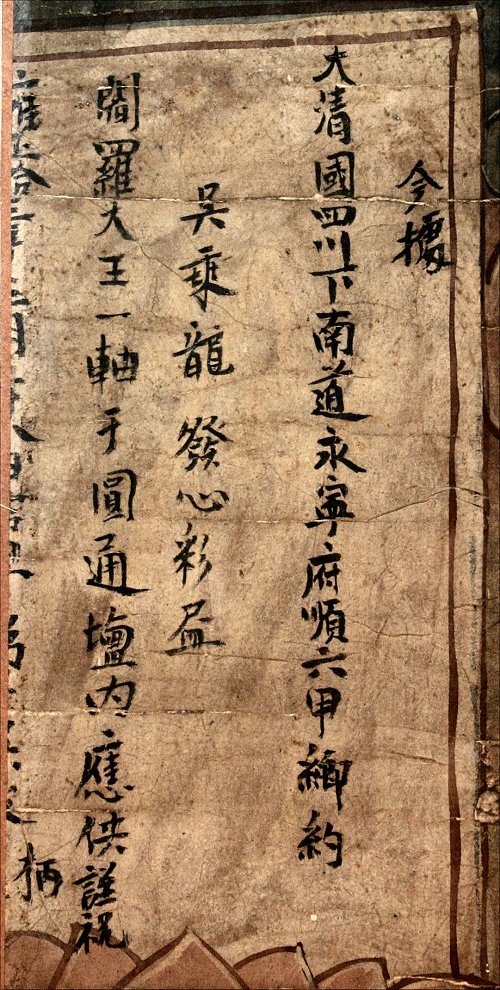
Dedicated to the fifth court, scroll S21 not only identifies the sponsor - a certain Wu Chenglong - but also the year (the 13th year of the Qing Dynasty's Yongzheng reign period or 1735) and place of origin (a locality in Sichuan).
